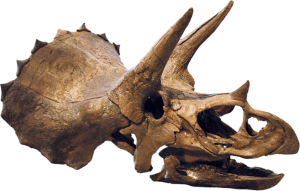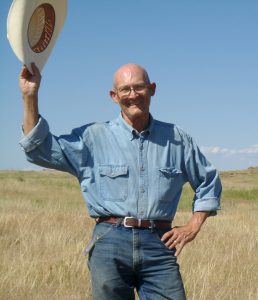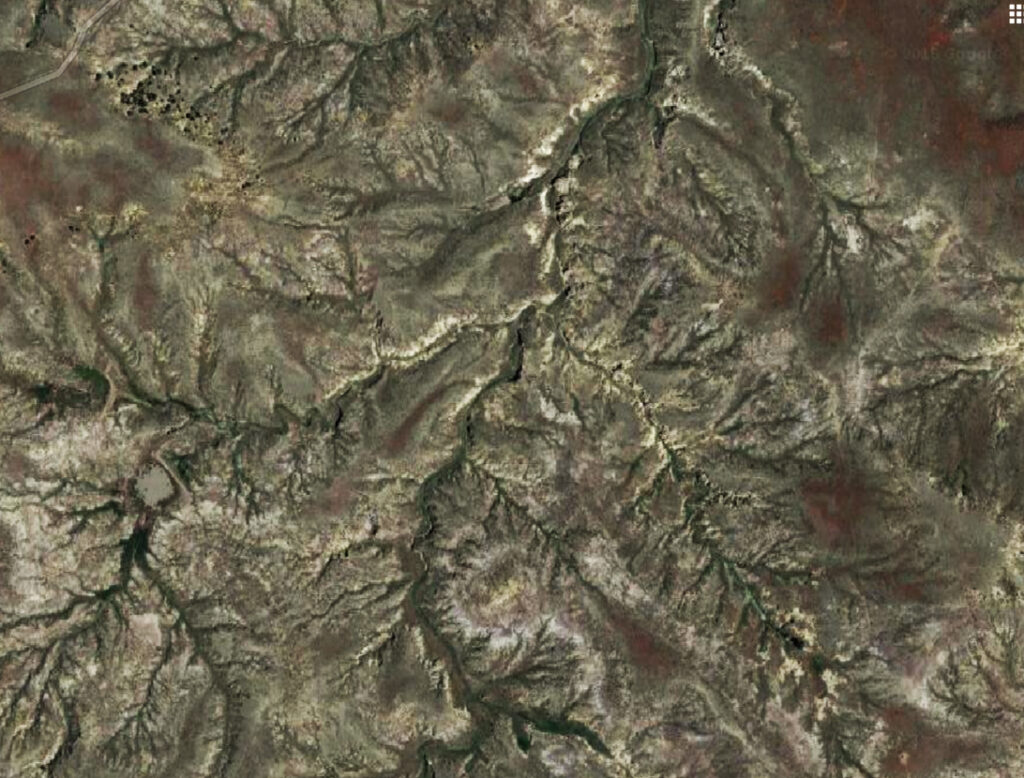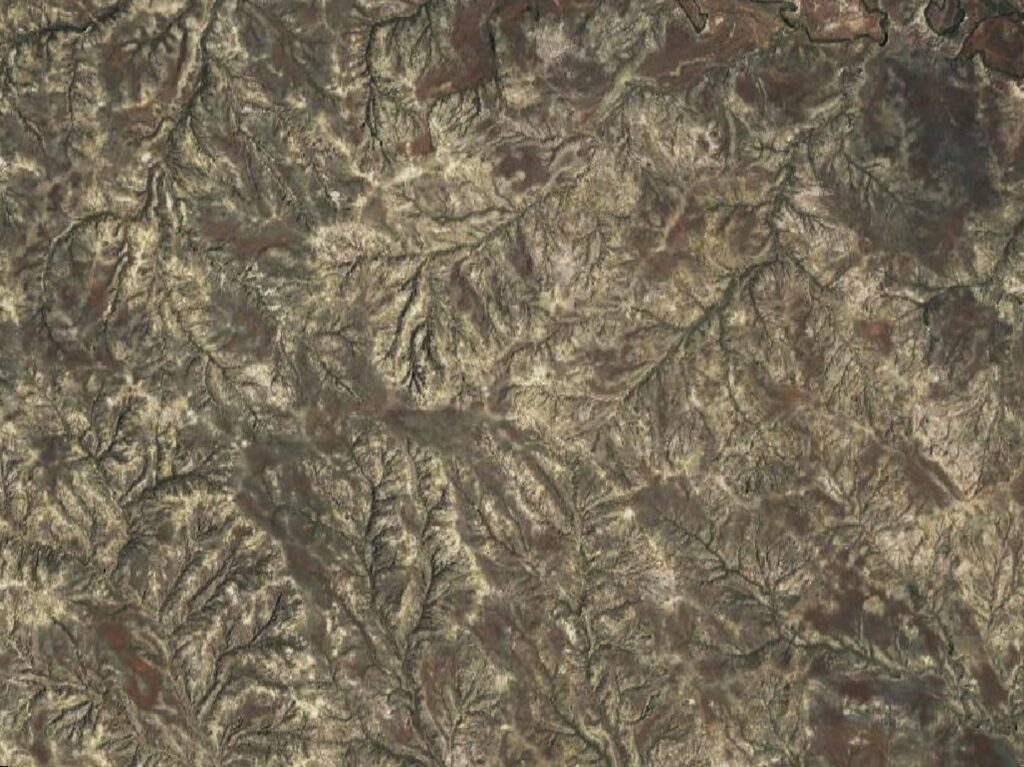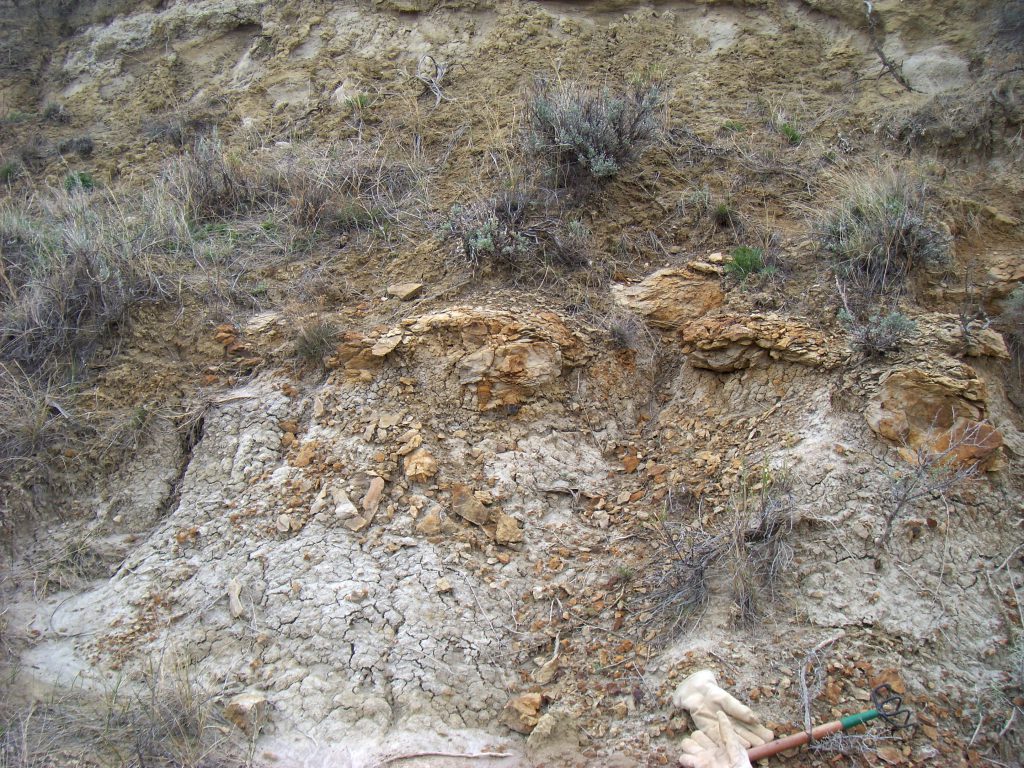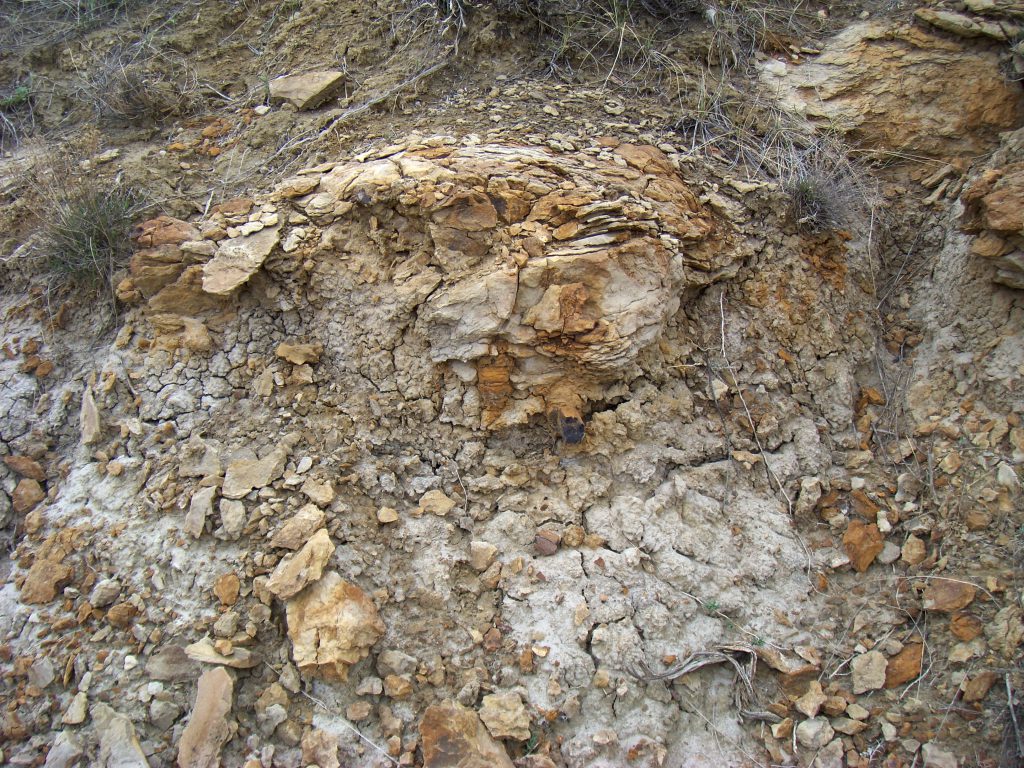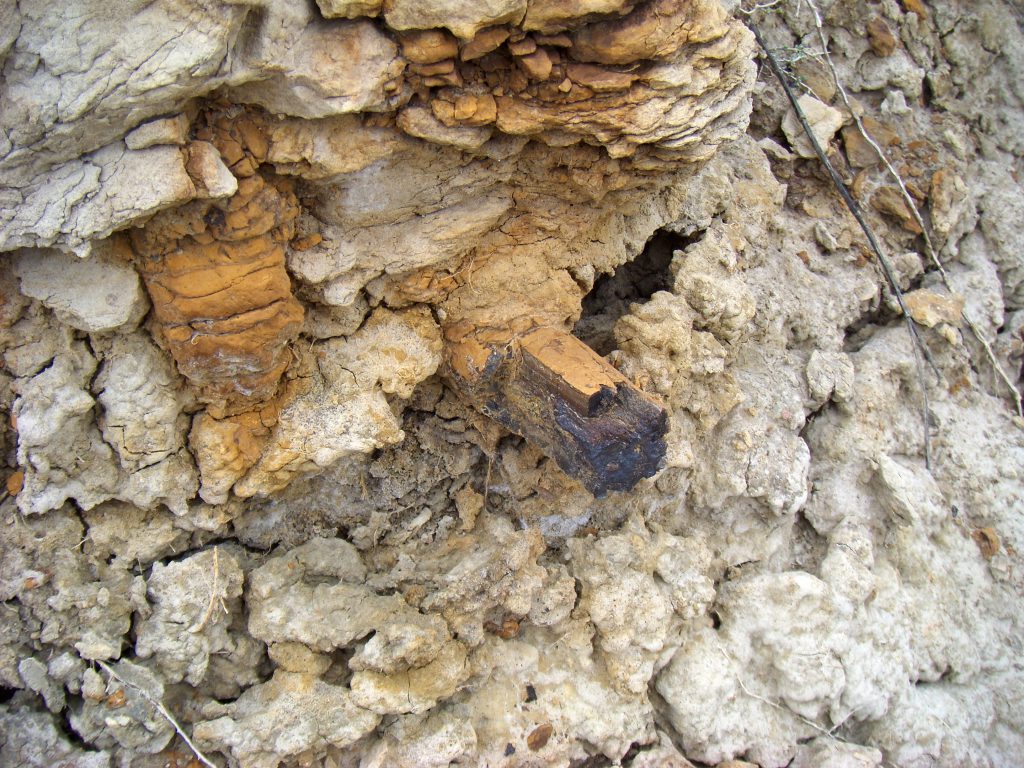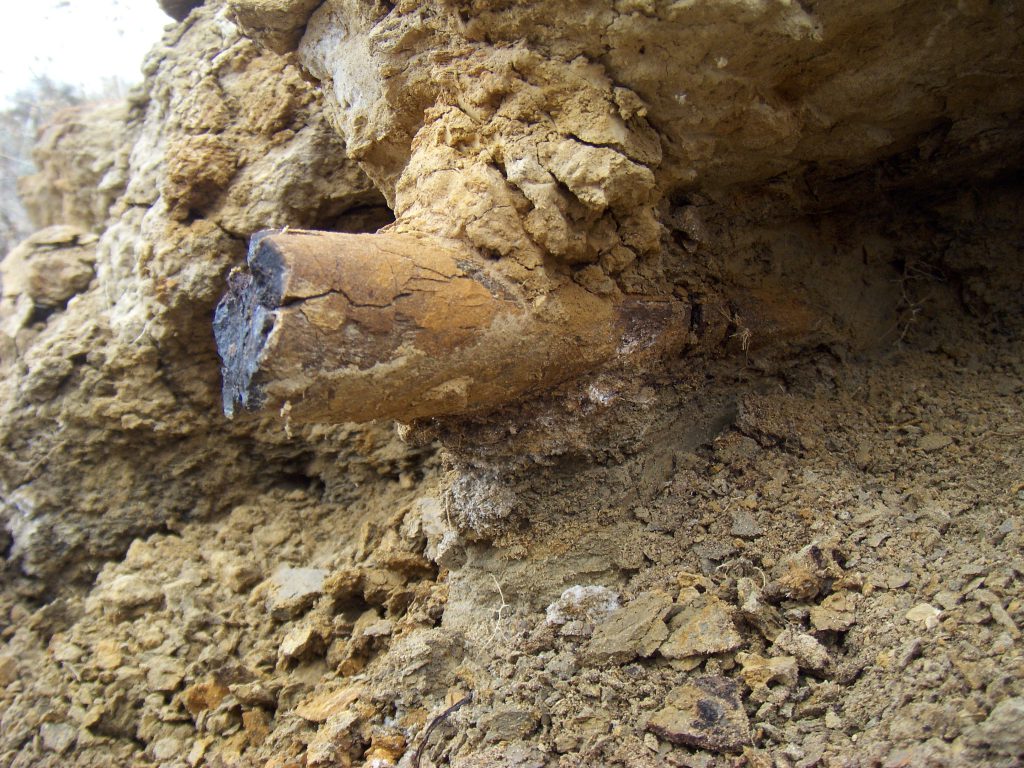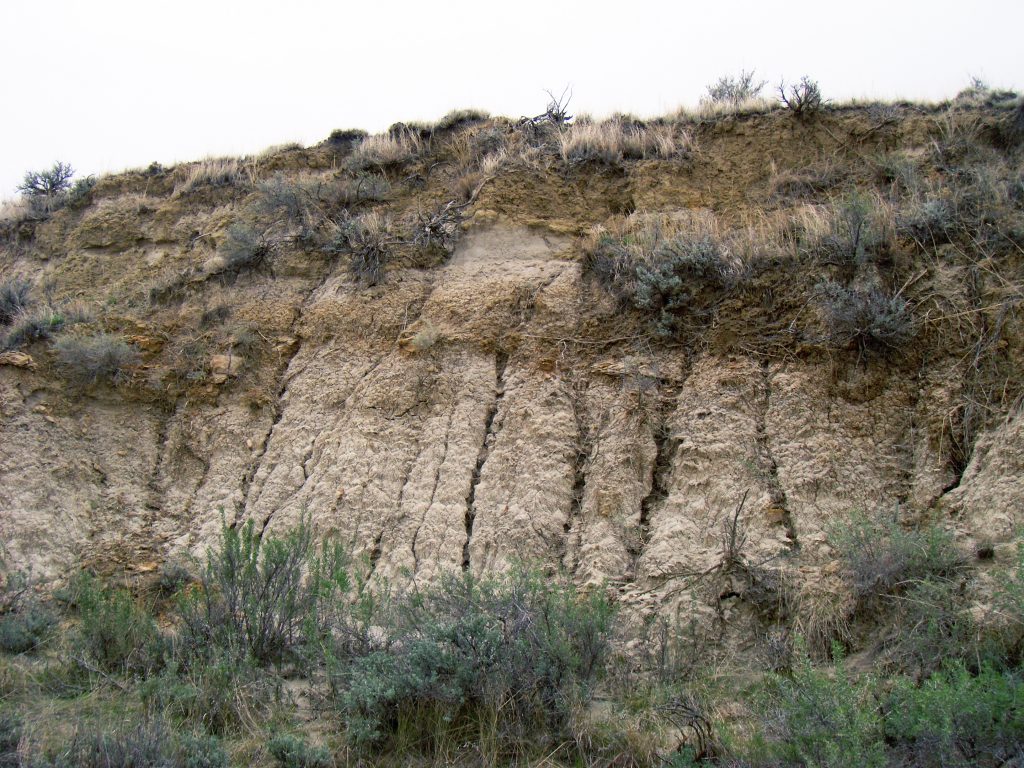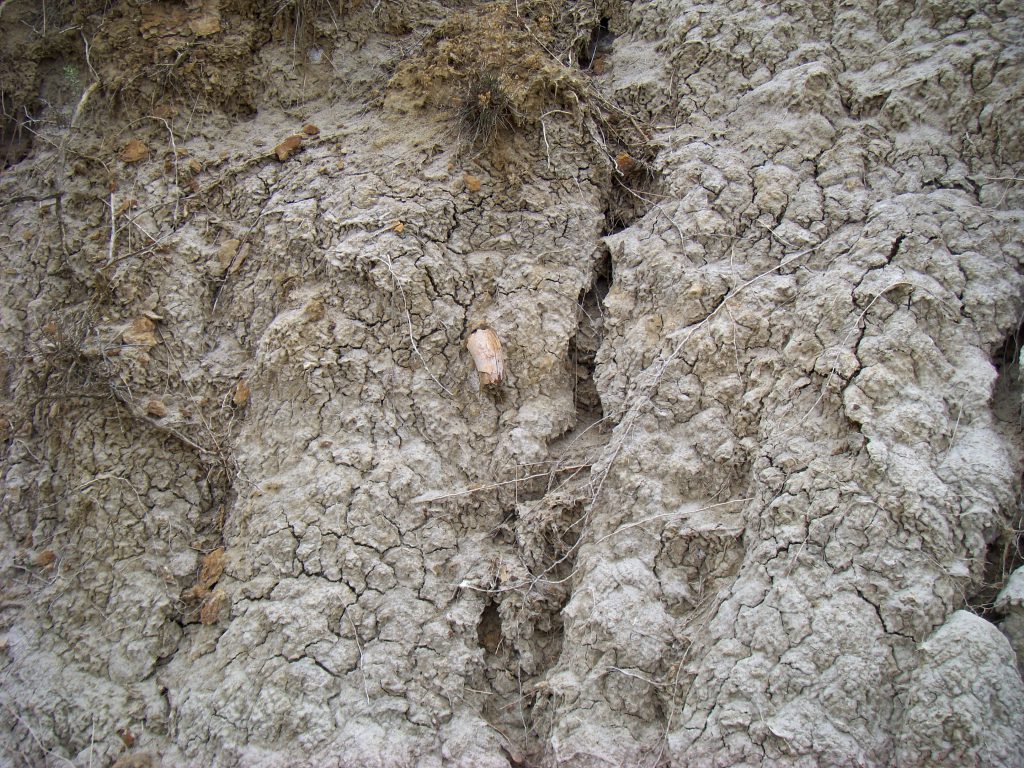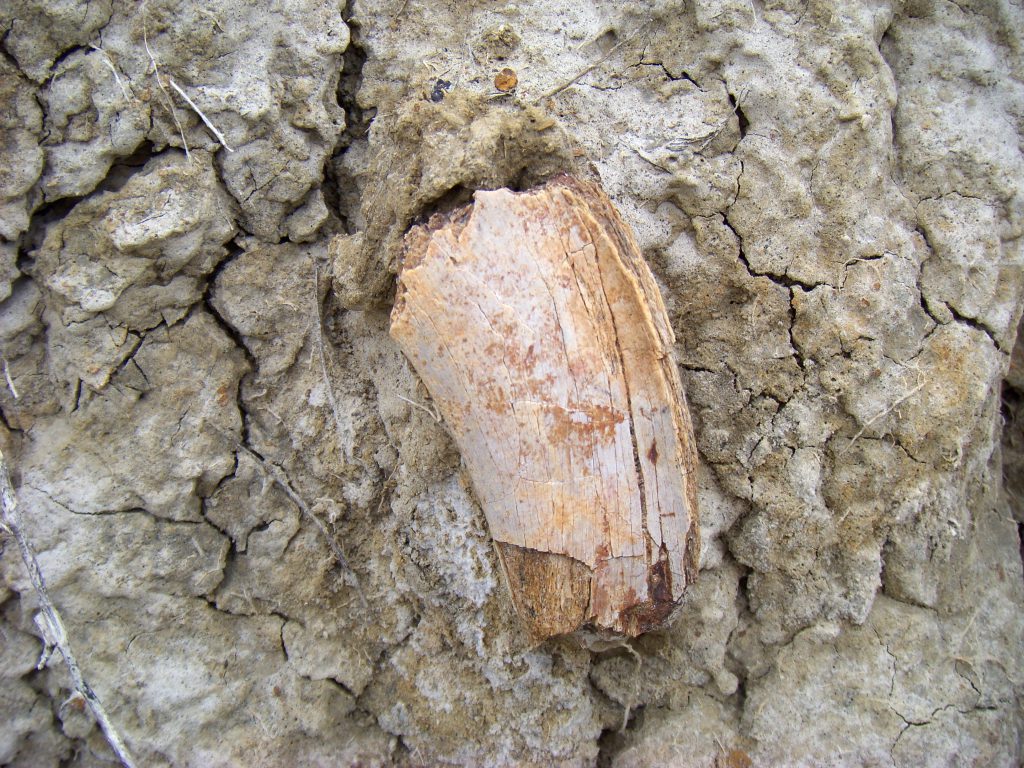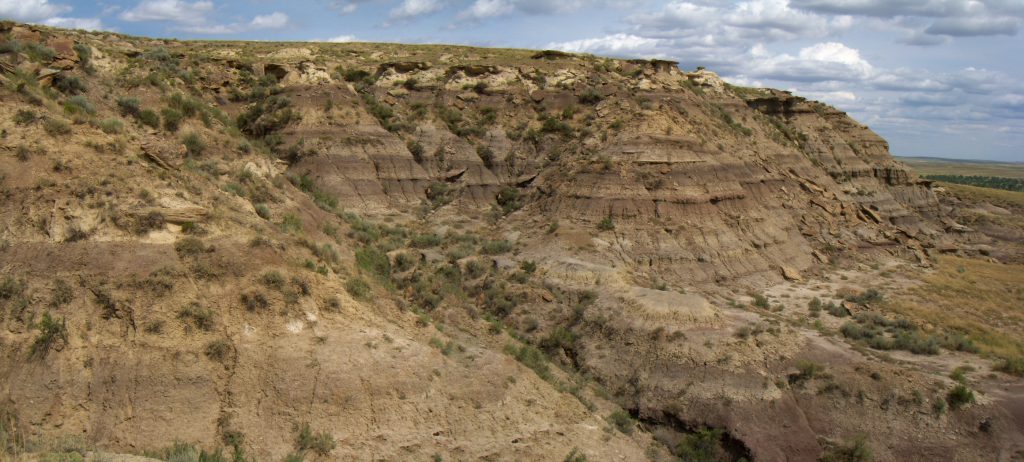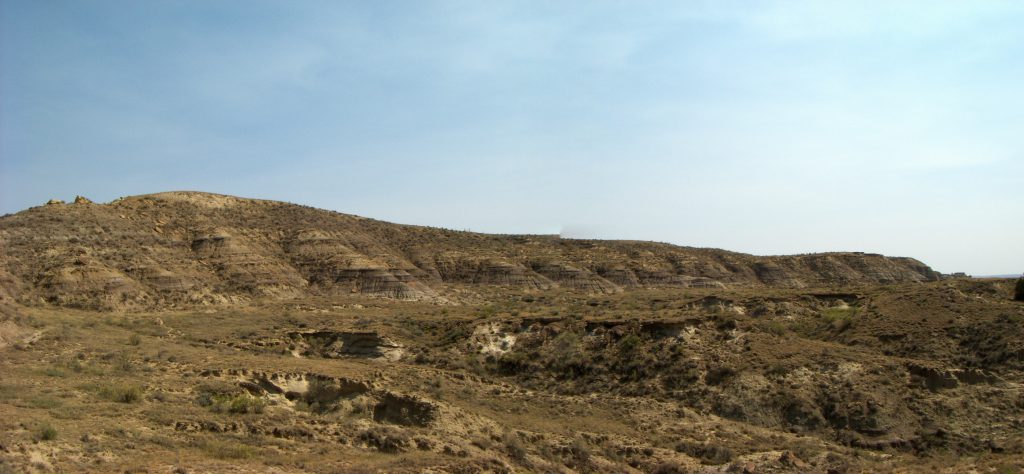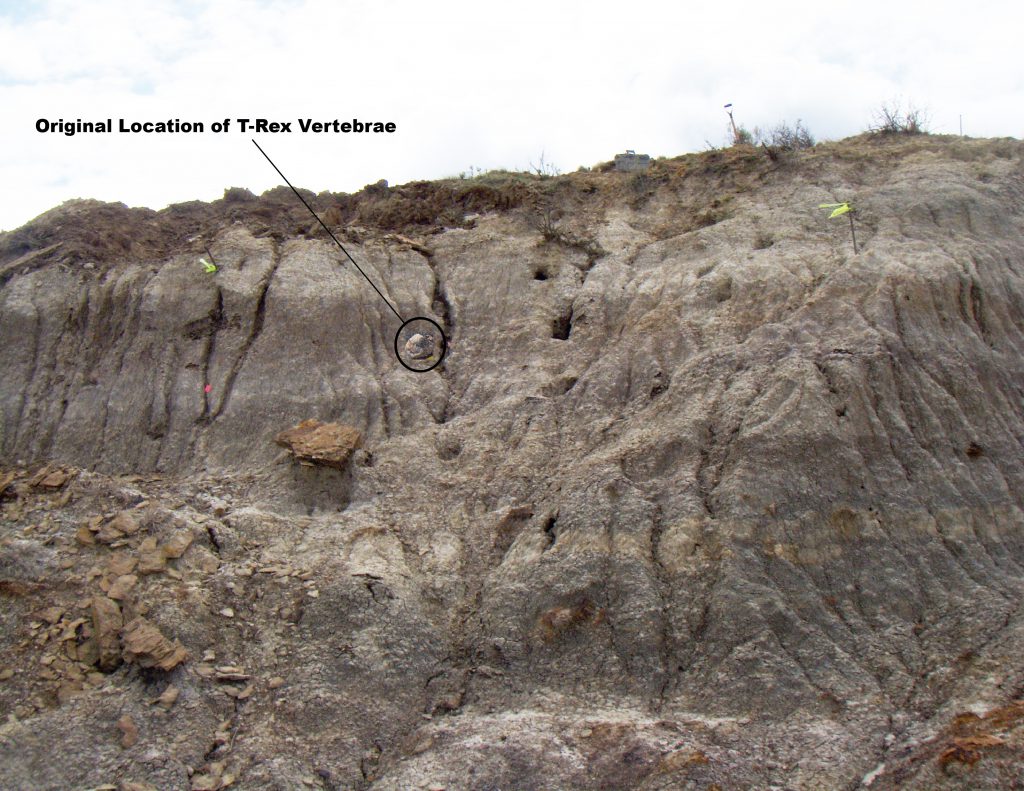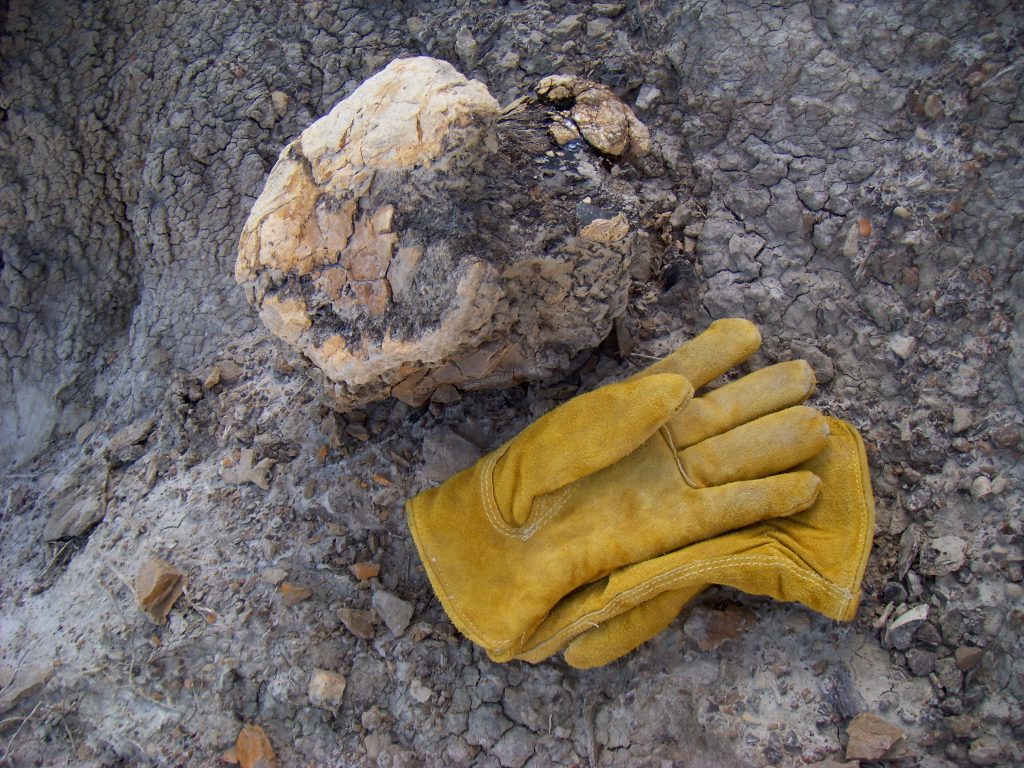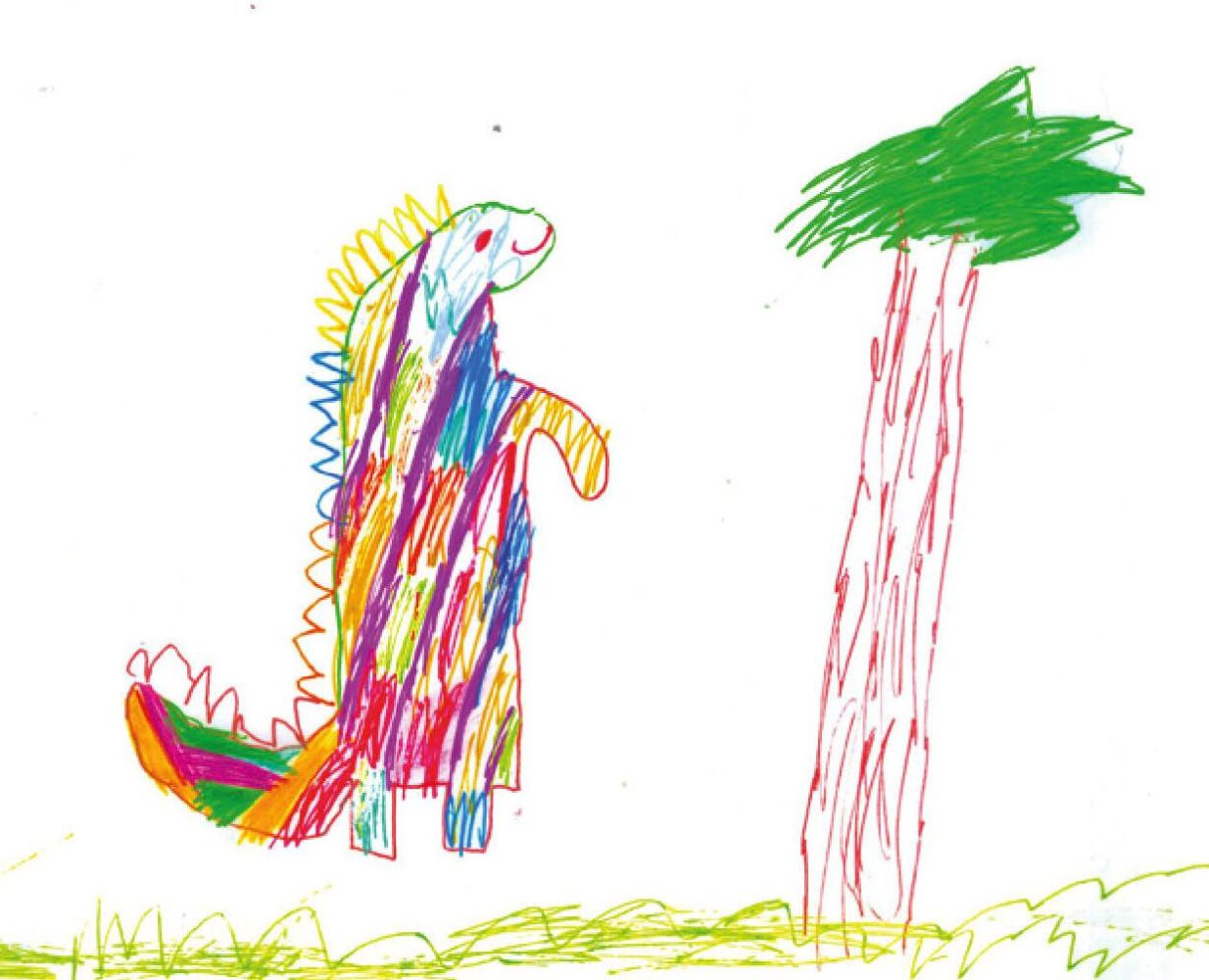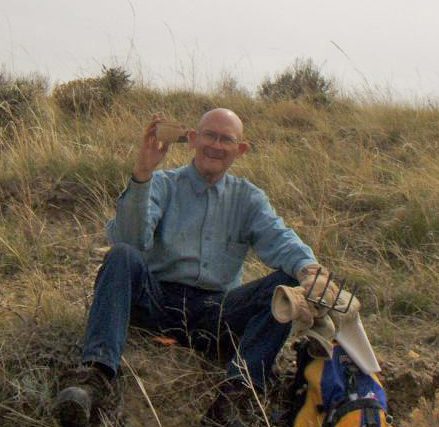
In my early years, I would drive to a particular area, park my van and walk to investigate every bald spot or exposed area that wasn’t covered by grass. I had no real plan. I would look but not see, because I did not have a reference. I was searching blind. I could not recognize a fossil fragment from a rock, nor could I tell which strata would be most promising. As a result, I rarely found anything. It took me a few years to begin to find specimens.
Many areas in the prairie may look flat or just rolling from the road, but from Google Maps you can see all the fingers of washes and gullies with steep slopes. It is on these slopes that I began to find specimens. I should have recognized this earlier, but I didn’t. I later read in several web sites that this is where you should always focus your search. You depend on natural erosion to expose a portion of a buried fossil. Oh well, I learned the hard way.
I climb up and down and then crisscross an exposed slope top, center and bottom like a billy goat looking for that bone that has started to erode out of the bank. I also look back to where I have just been walking. The same ground can look different from another direction. I simply repeat this over and over and just keep climbing and looking, day after day.
These slopes are in constant motion. The shale matrix sloughs down hill in small degrees during each rain and after each freeze. Grains of soil are physically carried down slope with the flow of rainwater. But in addition, they also move down the slope over time like they were walking down a stairs. When the surface of the slope freezes, the particles of sand or dirt move up and out perpendicular to the slope as the ground surface swells. But, when the freeze thaws, the particles do not return to their original location. Gravity pulls the particles straight down to a new, ever so slightly lower location.
The ravine basins are filled with what has washed down from the slopes over time. If I find a bone fragment in a basin, I immediately look up the side of the slope to see from where it had eroded. Some times I roll a golf ball size rock down the slope to identify the likely fall line. Then I work back up that line to see if the piece was dislodged from a higher location. If I find an exposed bone high up in a bank, I reverse the order and search for fragments down hill that have already eroded out. I want to clear this area first before these fragments get buried in the tailings and debris when I dig above them.
Field Patterns
The more time I spent in the field the more I began to see patterns. I recognized that each property and search area has its own normal. Your eyes become accustomed to an area and you adapt to the shapes, sizes and colors of rocks and fragments that appear normal to that particular area. You are then better able to identify anything that is not normal and does not fit in. I have climbed up many slopes to view odd rocks and concretions, which turned out to be just that… rock. But, they were different enough from the norm that I had to check them out.
When you move to a new area your eyes will automatically adjust to the new surroundings and establish a new normal. In time you develop eyes for fossils. I cannot explain, it just happens. Now, I can often spot a bone fragment in a bank from fifty feet away. It stands out like a beacon to me because it just does not belong. At the same time, I have often walked back over an area I recently covered and oops! I missed one right out in the open. Here are two examples. Can you find the fossil bone in first photo?
How about in the first photo here?
About 9 out of 10 fossils that I have found were from the same geological laver or structure in an eroding bank. In my regular search areas this was a brownish/maroon shale usually no more than 4-6 feet deep. From then on I would bypass all of the other types of exposures and began to focus on only that particular strata. At last I knew what to look for. This does not mean that there are no fossils in the areas that I now ignore. I have a limited search time on each expedition, and this strategy helps to maximize the possibility of my finding a fossil.
With a search time constraint, I found I had developed a habit of looking for this strata only on the sides of steep eroding banks. I am usually hiking and looking up from the floor of the ravine. When I reviewed my last 50 fossils discoveries, I found that indeed 40% were in or on the side of a steep bank, another 30% were on or near the surface in a heavily eroded area with only a 10 degree grade. However, surprisingly, 30% more were up slope at or near the grass line. When I realized this I made plans to revisit many sites. I will start at the grass line, and work my way back down. The search is always a learn as you go process. An experienced colleague asserts “you can find then anywhere,” and he no longer discounts any structure.
Search Targets
I develop search plans during the off-season and between trips with Google Earth or Google Maps. I magnify the ravines on each property via Google Maps to identify the location of all the exposures that look like my target strata. I then mark their exact location and L&L coordinates on my fold out geological and parcel maps.
I number the potential target areas within each property. I calculate how far each potential site is from access roads and trails and began to cluster multiple search hikes from a centralized parking location. I usually have 5 to 10 search routes already mapped out for each property parcel before I leave home.
Lastly, I do a fly over of the key areas via Google Earth to get a 3D perspective of the terrain. By the time I get into the field, I have already walked each route in my head. When I am finally there, I have the feeling as if I am coming back to where I have been before. This routine saves so much time and effort.
The Unexpected
There is no perfect search plan. One day I was passing several slopes of a gray mudstone on my way to better search areas. I was in a hurry because this was just the wrong strata for me. Then I saw a lump sticking out of one of the slopes. Oh well! just another slowly eroding iron concretion. When I feel like moving on I say to myself, “This is what your are here for, isn’t it? Get up there!” It did have a unusual light tan outer crust.
After the climb, I got within two feet of this lump, and I knew exactly what it was. It was the centrum portion of the vertebrae of a T-Rex. Nothing else looks quite like it. Rather than normal bone marrow matrix, the core looks like it was filled with a mass of small black/brown beans. Well, so much for my theories on the best search strategy. There can be a surprise in every slope.
Field Tips
Follow Up
Because of the unrelenting slope movement, I make a habit of going back to old sites after a couple of years to see if any other bones have become exposed that I could not locate before. I was surprised that at one old site the bank had eroded back 6 inches after only two years. Sticking out of that older bank was a sun bleached tip of a Triceratops Squamosal. When fully uncovered, it was one of two pieces, the second was complete and 3 feet long. I poked around the area with my ice pick, but found no additional bones. I will check that area again in another 2-3 years.
L&L Coordinates
Be prepared to log the L&L coordinates of the bones you find as you find them. Do not trust it to memory. A hundred yards further down the ravine you may find more bone and then another further beyond. I have more than once discovered a bone site but did not immediately document the location. I thought I would just circle back later in the day, and so I hiked on. I have never been able to rediscover those bones. They are still out there eroding away. Shame on me!
Pack Heavy
Make sure you take enough gear along on a hike. You think you are just going to explore for a short distance, but then half a mile from your vehicle you find a specimen that needs work. Where are all the specialized tools and glue? Many times I regret not taking more with me even on short hikes. You end up hiking twice as far as you had planed at first. You think you are heading back to the van when you see some promising strata that you had missed further out. A hundred yards further and you see yet another good site still further out and so on.
Now, I always pack for a hike on the heavy side. I do not want to be stuck far from my van without what I need. Each trip I now find thumb size bone fragments all over the desert or prairie. I do not need any more, yet I keep picking them up. Finding fossils is like eating peanuts or chips. It is hard to stop even when you have a garage full already. I wonder what my family will do with all of my specimens when I’m gone. Oh well, I’m having too much fun to stop.
Future Plans
I must continue to search to find evidence of the elusive species: Rainbowsaurus. I know he must have existed because my grandson Harrison Jones, drew me his picture. And, I know just where to look.
